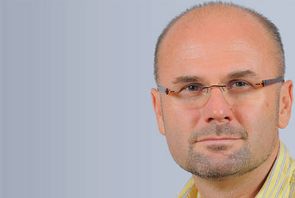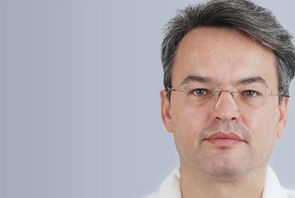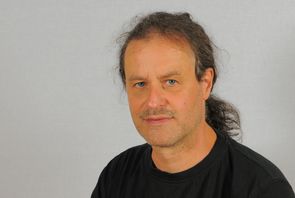Telecommunications, Navigation and Space
Mobile applications, measuring devices and processes for the space and communications industry.

Hilmwarte. The recently constructed Q-/V-band satellite ground station is one of only three comparable stations worldwide. Credit: JOANNEUM RESEARCH
For decades, we have been providing top performance in applications, measuring instruments and processes in the fields of space and telecommunications. This includes the optimisation of satellite transmission at extremely high radio frequencies as well as in the optical range and the security of satellite navigation reception. In addition, we develop algorithms for the three-dimensional analysis of image material from interplanetary space missions. These technologies can also be used for high-precision surveys on Earth.
Research focus:
- Satellites and terrestrial broadband communications
- Satellite navigation
- Radar technology and wave propagation
- Development of space-qualified hardware and software
- Space robotics
The long-standing, internationally recognised expertise of the Institute DIGITAL in wave propagation and satellite communication is the basis for experiments on the stability of satellite navigation systems. Since almost all modern devices contain information and communication technology, the topic has gained enormous importance and also affects autonomous vehicles and aircraft, which rely on a functioning navigation system for a successful mission.
DIGITAL has expertise built on the technologies of "software defined radio" and signal analysis:
- Design of communication systems, which starts with the definition of customer requirements and architecture design and goes all the way to prototypes for new demanding applications. Both the satellite and terrestrial technology sectors are covered here.
- Development of communication terminals for high-speed Internet access. Based on the "Software Radio Platform", it is possible to very quickly implement different requirements with regard to transmission, error protection and multiple access procedures. With little effort, specific solutions can be made ready for the market immediately.
- The monitoring, measurement and analysis of radio signals is of great importance for the reliability, availability and security of communication systems. Based on the "Software Radio Platform", customised solutions in the area of maintenance and security can be offered for such systems.
A mobile test laboratory, the "High-Tech Bus", which is on the road for the European Space Agency (ESA) and helps to improve the navigation system and internet network, rounds off the Institute's "Space" profile.
The recently built Q-/V-band satellite ground station is one of only three comparable stations in the world - an essential step by our experts for the later natural use of these ultra-high frequencies for satellite radio.
This order from the European Space Agency ESA is just another step in our consistent development, which is also of interest to customers and partners from industry. Our expertise also includes services for terrestrial broadband communication, with design and development of interactive and network systems. For satellite radio, we develop innovative modem solutions and efficient network configurations. This competence enables us to establish extremely powerful data connections to aircraft in disaster scenarios. Our powerful simulation hardware supports our research work.
2D video distrometer: The basic prerequisite for a wide range of applications in intelligence and remote sensing is reliable models of precipitation fine structure. The highly accurate instrument used worldwide to measure precipitation particles provides the basis for more accurate weather forecasts and precise statements about the effects of individual precipitation types on satellite radio links with comprehensive evaluation options.
A variety of machine vision techniques for applications in industrial inspection and metrology as well as robotics are being used to guide the European-Russian Mars rover project ExoMars through the image evaluations of the stereo panorama camera PanCam. Their images are evaluated three-dimensionally and visualised in the highest quality in cooperation with the VRVis Zentrum für Virtual Reality und Visualisierung Forschungs-GmbH (Vienna). Scientific and technical participation with 3D vision solutions in the US Mars-2020 mission with its stereo zoom instrument Mastcam-Z as well as the European HERA mission 2026 to the asteroid system Dydimos within the framework of the "Space Situational Awareness" initiative of the European Space Agency ESA are a cornerstone of the international visibility of the Institute DIGITAL.

Mars-Rover. Credit: NASA JPL-Caltech



